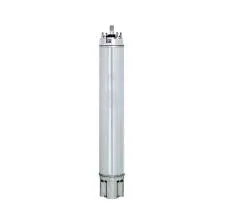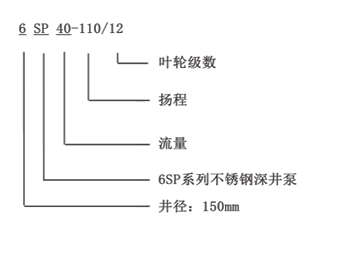2 月 . 13, 2025 04:49 Back to list
175QJ Deep Well Submersible Pump
Installing a submersible well pump can be a rewarding project that not only enhances your property’s water supply but also boosts its value. Undertaking this project requires a firm understanding of the nuances involved and the right guidance, ensuring efficiency, safety, and reliability. Whether you’re a seasoned DIY enthusiast or a homeowner exploring self-sufficiency, this comprehensive guide covers crucial aspects you need to know, ensuring the installation process is a success.
Step-by-step Installation Process 1. Power off any electrical supply to avoid risks during the installation. 2. Attach the pump to a drop cable and use a safety rope for additional security. The drop cable powers the pump, while the safety rope provides manual retrieval if required. 3. Fasten these connections securely to the pump to prevent detachment threats during operation. 4. Lower the pump carefully into the well. Use lifting equipment to maintain control over the lowering process, ensuring a gentle descent to avoid damaging the pump. 5. Connect the pump to the riser pipe, a conduit for water transport to your home. Ensure all connections are tight and secure to prevent any leaks that drastically reduce efficiency. 6. Establish the electrical connection. Follow local electrical codes, possibly consulting a professional to guarantee compliance with regulations. A control box should be strategically placed for easy access and maintenance while keeping it dry. 7. Seal the wellhead securely, preventing contaminants or debris from entering the well and risking both water quality and pump integrity. Post-installation Testing With the setup completed, energize the pump by reconnecting power. Observe the system’s operation, ensuring that it cycles on and off correctly and maintains consistent pressure. Initial tests should include measuring flow rate and pressure output to confirm it meets your expectations and specifications. Listen for unusual noise or vibrations, examining connections and installments for signs of leakage or instability. Ongoing Maintenance Tips To extend the lifespan of your submersible well pump, engage in regular maintenance checks. Annually inspect the system for wear or degradation, focusing on electrical components, seals, and pressure switches. Clean and test water regularly to ensure purity and pump function. Staying proactive can mitigate extensive repair costs and sustain reliable operation for years. Conclusively, while installing a submersible well pump can be complex, breaking it down into clear, manageable steps makes it achievable. This self-sufficiency enhancement can dramatically improve lifestyle quality while enhancing your property’s autonomy and resilience. Follow these guidelines to not only successfully install a submersible well pump but to do so with an informed and confident approach that ensures long-term satisfaction and functionality.


Step-by-step Installation Process 1. Power off any electrical supply to avoid risks during the installation. 2. Attach the pump to a drop cable and use a safety rope for additional security. The drop cable powers the pump, while the safety rope provides manual retrieval if required. 3. Fasten these connections securely to the pump to prevent detachment threats during operation. 4. Lower the pump carefully into the well. Use lifting equipment to maintain control over the lowering process, ensuring a gentle descent to avoid damaging the pump. 5. Connect the pump to the riser pipe, a conduit for water transport to your home. Ensure all connections are tight and secure to prevent any leaks that drastically reduce efficiency. 6. Establish the electrical connection. Follow local electrical codes, possibly consulting a professional to guarantee compliance with regulations. A control box should be strategically placed for easy access and maintenance while keeping it dry. 7. Seal the wellhead securely, preventing contaminants or debris from entering the well and risking both water quality and pump integrity. Post-installation Testing With the setup completed, energize the pump by reconnecting power. Observe the system’s operation, ensuring that it cycles on and off correctly and maintains consistent pressure. Initial tests should include measuring flow rate and pressure output to confirm it meets your expectations and specifications. Listen for unusual noise or vibrations, examining connections and installments for signs of leakage or instability. Ongoing Maintenance Tips To extend the lifespan of your submersible well pump, engage in regular maintenance checks. Annually inspect the system for wear or degradation, focusing on electrical components, seals, and pressure switches. Clean and test water regularly to ensure purity and pump function. Staying proactive can mitigate extensive repair costs and sustain reliable operation for years. Conclusively, while installing a submersible well pump can be complex, breaking it down into clear, manageable steps makes it achievable. This self-sufficiency enhancement can dramatically improve lifestyle quality while enhancing your property’s autonomy and resilience. Follow these guidelines to not only successfully install a submersible well pump but to do so with an informed and confident approach that ensures long-term satisfaction and functionality.
Latest news
-
Your Guide to Deep Well Pumps
NewsOct.31,2024
-
Why Choose a Stainless Steel Deep Well Pump?
NewsOct.31,2024
-
Understanding Water-Filled Submersible Pumps
NewsOct.31,2024
-
Understanding SS Submersible Pumps
NewsOct.31,2024
-
Reliable Submersible Well Pumps for Your Water Supply Needs
NewsOct.31,2024
-
Choosing the Right Submersible Pump for Your Water Management Needs
NewsOct.31,2024
-
 Understanding Water-Filled Submersible PumpsWhen it comes to selecting the right pump for your water management needs, understanding the different types available is crucial.Detail
Understanding Water-Filled Submersible PumpsWhen it comes to selecting the right pump for your water management needs, understanding the different types available is crucial.Detail -
 Guide to Installing a Deep Well Submersible PumpWhen dealing with deep wells, a deep well submersible pump is often the most effective solution for extracting water from significant depths.Detail
Guide to Installing a Deep Well Submersible PumpWhen dealing with deep wells, a deep well submersible pump is often the most effective solution for extracting water from significant depths.Detail -
 Finding the Right Submersible PumpWhen seeking an efficient solution for pumping water from deep wells, sumps, or other applications, the submersible pump is a leading choice.Detail
Finding the Right Submersible PumpWhen seeking an efficient solution for pumping water from deep wells, sumps, or other applications, the submersible pump is a leading choice.Detail
